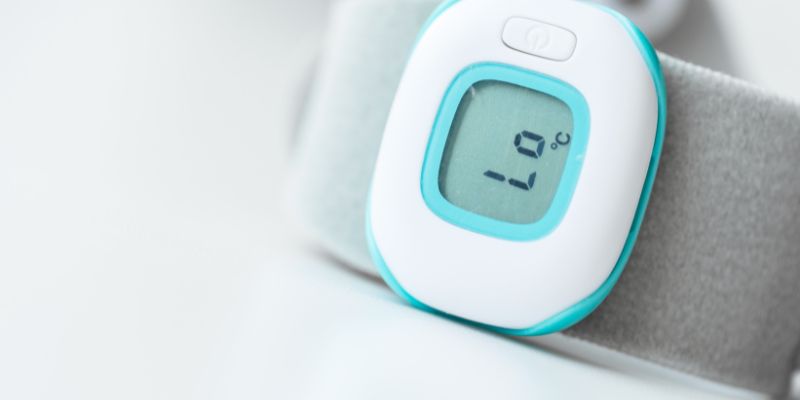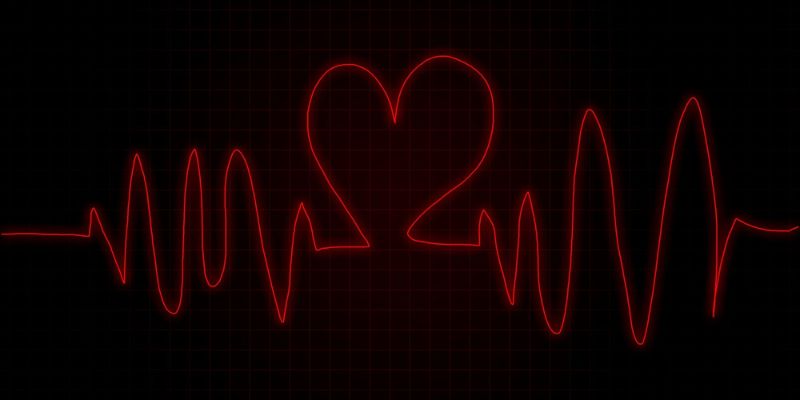What are the Benefits Of Wearing A Heart Rate Monitor During Exercise
Oct 09, 2024 By Isabella Moss
Have you ever wrapped up a workout and wondered if you pushed yourself sufficiently? Or possibly you've felt depleted after a session and addressed whether you overdid it. These questions are common among wellness devotees. That's where a heart rate screen comes into play. Imagine having an individual coach on your wrist, directing you through each step of your workout schedule. With a heart rate screen, you get real-time criticism on how difficult your heart works, making a difference you remain in the right zone for your wellness objectives.
This straightforward monitor can upgrade your preparation involvement, whether running, cycling, or lifting weights. It makes a difference in maximizing fat burning, moving forward perseverance, and maintaining a strategic distance from wounds. Are you curious about how this small gadget can change your workouts? Let's investigate the benefits of a heart rate screen and why you should consider consolidating one into your wellness regimen!

The Importance of Monitoring Your Heart Rate
An important gauge of your exercise intensity is your heart rate. It displays your heart's minute rate of beating. Knowing this number helps you determine whether your exercise intensity is appropriate. Too low, and your exercise may not yield the full advantages. Too high; you run the danger of overworking yourself. The key here is heart rate zones. These zones match varying workout intensities by a range of beats per minute (BPM). Each of the five typical heart rate zones has particular advantages:
- Zone 1 (50-60% of maximum heart rate): Perfect for gentle exercise, cool-down, and warming-up.
- Zone 2 (60-70% of maximum heart rate): This is sometimes known as the "fat-burning zone," as your body mostly burns fat for energy.
- Zone 3 (70-80% of maximum heart rate): This zone raises aerobic capacity and cardiac endurance.
- Zone 4 (80-90% of maximum heart rate): This high-intensity zone increases output and speed.
- Zone 5 (90-100% of maximum heart rate): Set aside for brief, focused bursts of work akin to sprinting or heavy lifting.
Keeping inside the correct zone for your goals depends on knowing your heart rate. It also alerts you when pushing too hard, preventing overtraining or injury.

Benefits of Using a Heart Rate Monitor
Here are some benefits of using a heart rate monitor:
Exercise with Accuracy
Real-time feedback on your efforts comes from a heart rate monitor. You know whether you're working at the correct intensity rather than speculating. This accuracy lets you correct on demand. You can either slow down or increase your effort to keep in your intended heart rate zone.
Stay Motivated
Seeing your exercise heart rate can inspire you. Seeing your improvement in real-time is encouraging whether you are working within your desired zone. It provides quantifiable information to monitor your increasing fitness over time. With this input, little triumphs like lowering resting heart rate or reaching a higher intensity zone feel more real.
Prevent Overtraining
Commonly occurring, especially for those who push themselves too hard, is overtraining. You can help to avoid this by using a heart rate monitor. Should your heart rate be too high for too long, the gadget signals you to slow down. This guards against burnout, tiredness, and injury.
Personalized Workouts
Everybody has various fitness objectives and degrees of ability. Heart rate monitors let you customize your exercises, especially to fit your requirements. Certain gadgets even provide individualized coaching based on heart rate data.
Types of Heart Rate Monitors
Your tastes and money will determine which of the several heart rate monitors you want. Let's review the most often occurring forms now.
Chest Strap Monitors
These devices track your heart rate by counting electrical signals from your heart and wearing a chest strap over your chest. Many times, they are the most accurate. Many athletes find that chest straps provide great accuracy, particularly during demanding workouts.
Wrist-Based Monitors
Many smartwatches and fitness trackers have wrist-based heart rate monitors incorporated. Light sensors are handy for tracking your heart rate and wear. Although they might not be as exact as chest straps, they are excellent for daily use and offer relevant information.
Finger Sensors and Ear Clip Monitors
Certain heart rate monitors slide on your finger or ear. Though less prevalent, it is simple to use and provides accurate results. Long-term wear during vigorous activities is sometimes less practical, though.
How to Use a Heart Rate Monitor?
While using a heart rate monitor is easy, data interpretation is crucial. Here's a fundamental guide to utilizing one efficiently:
Calculate Your Maximum Heart Rate
Using a heart rate monitor requires knowledge about your maximal heart rate. Your age of less than 220 is a basic formula. For instance, at thirty years of age, your maximum heart rate would be 190 beats per minute (220 - 30 = 190). Though this is only an approximation, most individuals find this to be true.
Find Your Target Heart Rate Zones
Your target heart rate zones can be found once you know your maximum heart rate. These zones represent portions of your maximum heart rate. For instance, if your target is fat-burning, you would want to stay in Zone 2, which spans 60 to 70% of your maximum heart rate.
Monitor During Workouts
Look at your heart rate monitor as you work out. Ensure your heart rate zone is within what is suitable for your intended level of exercise. Alarms on some monitors let you know whether you stray from your intended zone. It quickly helps you modify your effort level.
Review Your Data
Review your heart rate statistics following exercise. Examine your time spent in every zone and whether you met your exercise targets. You'll see patterns over time, including reduced resting heart rates or the capacity to push into higher zones.
Conclusion:
Including a heart rate monitor in your workouts will greatly improve your development path. Real-time feedback guarantees that you are working at the correct level for your objectives. Along with optimizing the efficacy of your training, you will remain motivated and minimize overtraining hazards.
Given the range of choices, there is a heart rate monitor to fit every taste and budget. This tool will enable you to track your development and make educated changes regardless of your experience as an athlete. Therefore, consider including a heart rate monitor in your exercise program to improve today's workouts!







